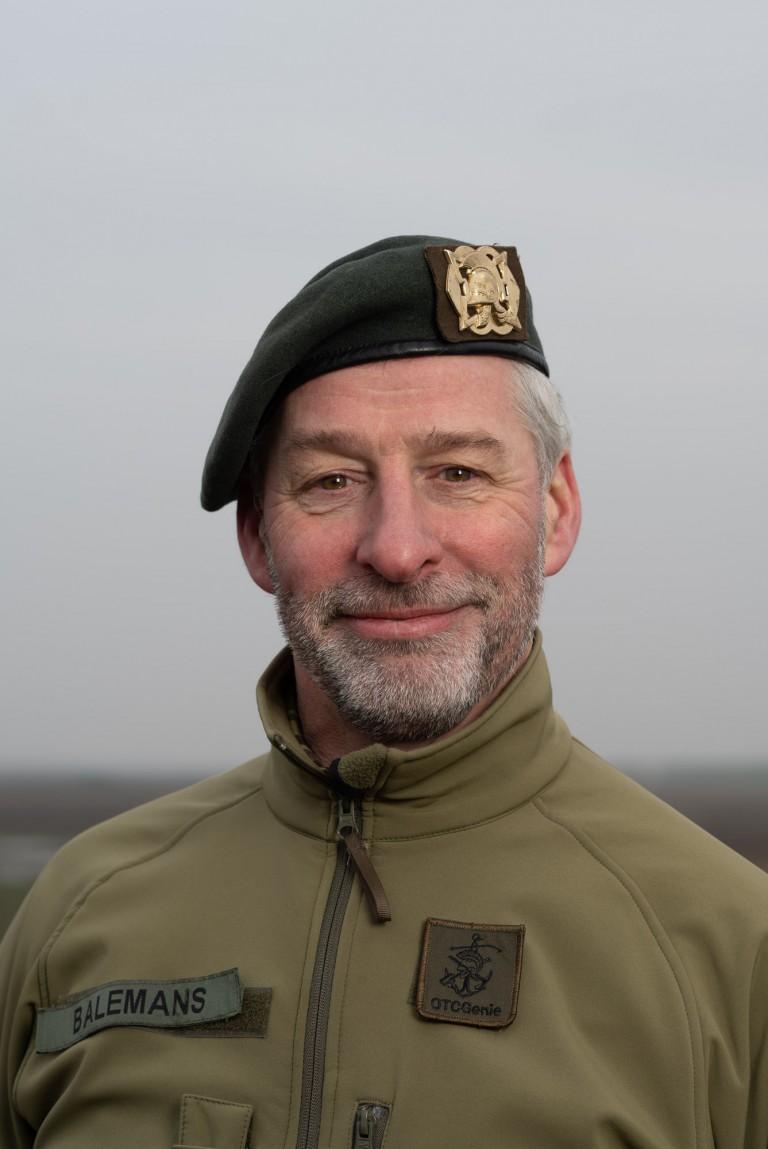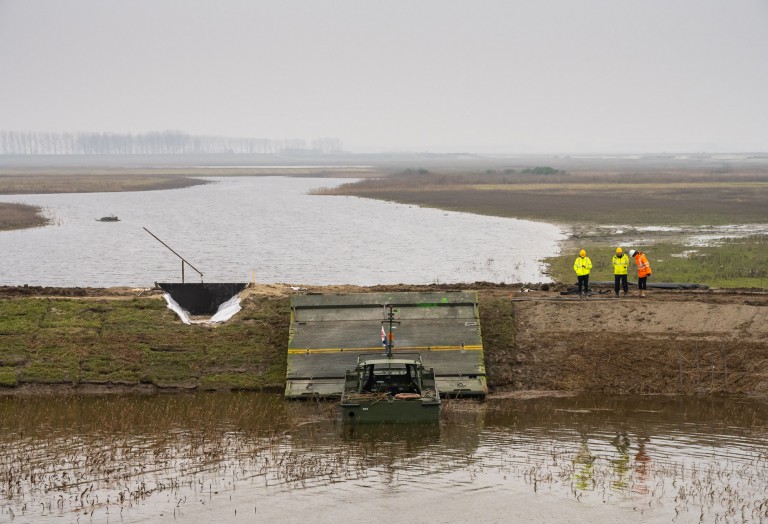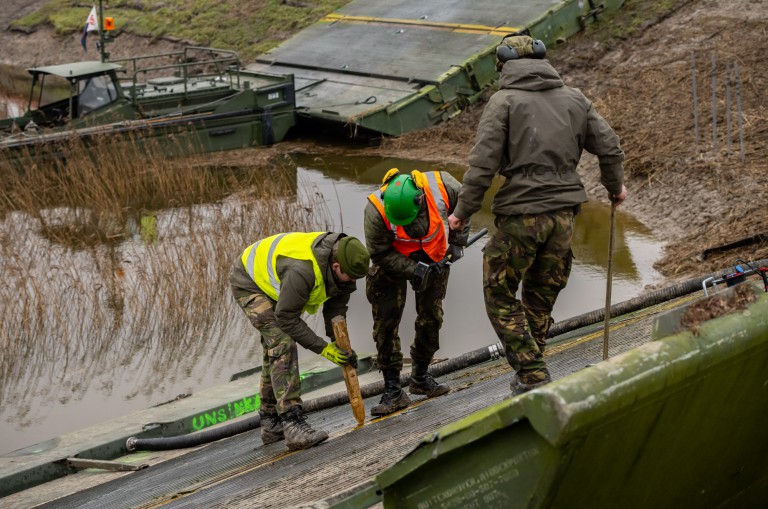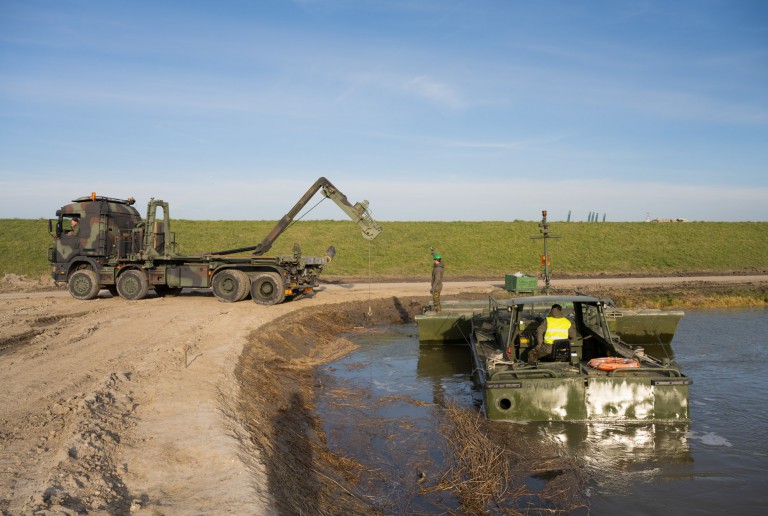Partner of the month interview: Ministry of Defence
- 25 April 2022
- Francien Horrevorts
- Emergency Response
One of the strengths of Polder2C’s is that it is an international project, where many parties work together, share expert skills and facilitate knowledge transfer. A total of fourteen partners from the Netherlands, Belgium, France and the United Kingdom participate in the project. Each month we put one of our partners in the spotlight. In April our partner of the month is the Dutch Ministry of Defence.
Ministry of Defence
The Dutch Ministry of Defence is responsible for the armed forces of the Netherlands and Veterans Affairs. They are represented in the Polder2C's project by the Netherlands Defence Academy (NLDA), Dutch Army Corps of Engineers and the Corps of Army Reservists. Lieutenant-Colonel Marc Balemans, Programme Manager WTEc - Water risk Training Expertise centre, represents the Ministry of Defence to answer our questions.

What is the core business of your organisation?
The Ministry of Defence is responsible for the armed forces of the Netherlands and Veterans Affairs. The Ministry of Defence has 3 main tasks:
- Defend its own territory (including the Caribbean part of the Kingdom of the Netherlands) as well as the territory that of its allies;
- Protect and promote the international rule of law and stability;
- Support the government (for example, provinces and municipalities) with law enforcement, disaster relief and humanitarian aid, nationally and internationally.
The Ministry’s participation in Polder2C’s is through task 3: disaster relief and emergency response in the context of water crises. Moreover, the Dutch army has historically ample experience with water management, for example by their immense defensive waterlines (Dutch: waterlinies) which also entails large scale inundations in case of emergencies.
Participation in Polder2C’s involves various departments within the Ministry:
- The Engineer Regiment, including the 105th Hydraulic Engineering Company
- The Netherlands Defence Academy (NLDA), the ‘university’ of the army, educating future military officers, leaders and experts
- 13 Light Brigade, as responsible unit for disaster relief in the southern part of the Netherlands

What is the role of your organisation in the Polder2C’s project?
The Ministry of Defence is mainly active in the field of Emergency Response. Together with Rijkswaterstaat and STOWA (on behalf of the waterboards) the Ministry of Defence is one of the lead partners of this topic. The tasks are:
- BreachDefender: development and testing of new techniques for levee breach counter measures under practical and realistic circumstances, by means of the ‘BreachDefender’ concept
- Mobile Barrier solutions as an alternative for sand bags
- Controlled breach initiation: developing and demonstrating breach initiation techniques (with explosives): this may be used to release the overall pressure on a levee system and prevent uncontrolled breaching. Furthermore, levees may contain (old WWII) explosives. It is important to understand the potential damage that an (un)wanted detonation may cause in the levee and its surroundings
- Levee exercises: support in levee inspection and emergency measures

What have we gained from the Polder2C's project until now, do you think?
A number of outcomes from the Polder2C’s project can be addressed, including but not limited to:
- Close collaboration between various departments within the Ministry of Defence, including operational units (105th Hydraulic Engineering Company) and Centres of expertise and institutes (Centre of Expertise Military Engineering and Netherlands Defence Academy) and their external stakeholders (through WTEc - Water risk Training Expertise centre);
- Collaboration with national partners in water safety chain (waterboards): this has led to a number of waterboard employees that have enrolled as specialist in the reservist branch of the army (leading to improved information exchange and understanding);
- Collaboration with international partners;
- Knowledge development and dissemination through 10 Military Bachelor theses, 2 Bachelor theses in collaboration with Universities of Applied Sciences, 1 master’s thesis in collaboration with TU Delft, one PhD thesis in collaboration with TU Delft;
- Exercises and on the job training of soldiers, cadets and students from other institutions for Higher Education involved the Polder2C's project;
- Several innovations and best practices improvement suggestions per task concerning Emergency Response;
- Showcasing the efforts, importance and possibilities of scientific research on water safety to the general public and politics.
"Collaboration, training and knowledge exchange are key enablers to climate adaptation."
Marc Balemans, Ministry of Defence
What innovation or development are you eagerly waiting for?
- Almost-real-time situational awareness of levee conditions for military emergency response units: where to go? An example is using almost-real-time LIDAR-difference maps from drones;
- Availability of levees at emergency conditions for explosive breach tests;
- 'Play grounds’ like the Living Lab Hedwige-Prosperpolder for continuation of the current research and training efforts;
- Development of a scenario-based training in emergency response, depending on availability of units or civil responders;
- The continuation of the activities set and initiated by the Polder2C's project, after the ending of the project.

What is the best thing someone can do to contribute to climate adaptation?
Results of scientific research are of the greatest importance to raise awareness regarding the dangers of climate change, both for the general public and politics, as well as all public and private organisations that could potentially contribute to solutions on this subject. Collaboration, training and knowledge exchange are key enablers to climate adaptation. The Ministry of Defence's role would be in the areas of emergency response and disaster relief, both at the level of scientific research and practical training.
Why have you decided to be partner of the project?
First of all, we believe in civil-military cooperation on emergency response by doing. Working together is the best way to get to know each other and also to do research together. On the other hand, the field experiments give us information for our own work. Secondly, the ability of training on a larger scale of emergency response (i.e. levee inspection, BreachDefender), creating a more stable network with civil authorities and businesses and the opportunity for knowledge exchange on emergency measures and inspection techniques. In the end, civil water authorities and the Ministry of Defence are better prepared for future challenges on water safety.
